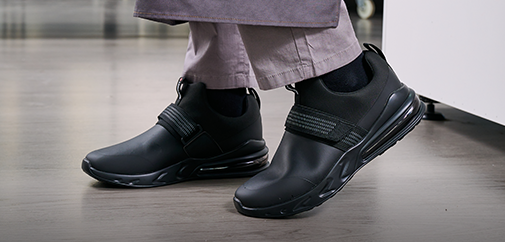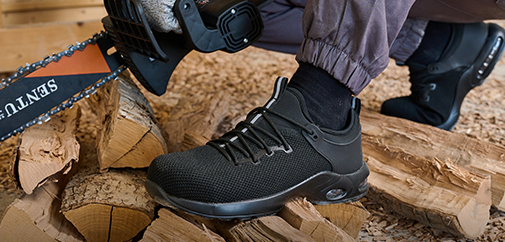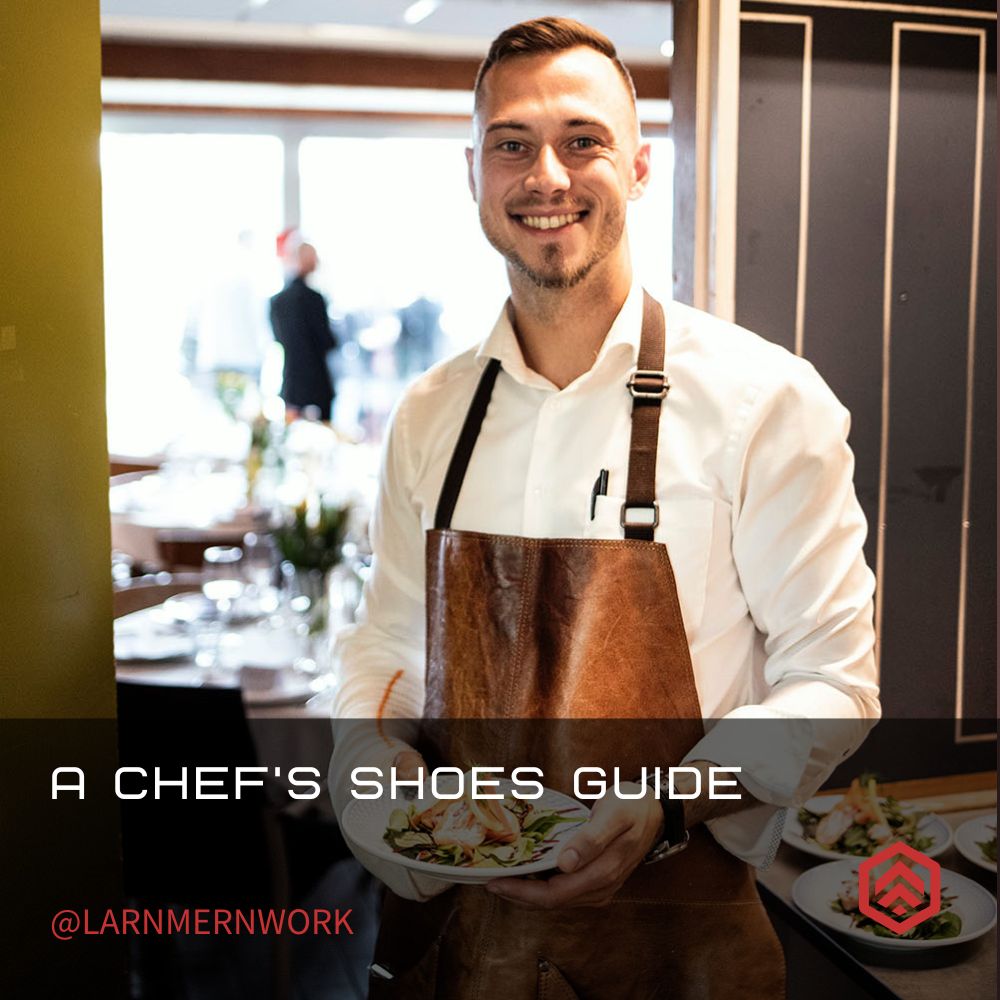The kitchen is a dynamic and bustling place, where culinary creativity meets the practicality of meal preparation. However, the frenetic pace of the kitchen also brings with it certain hazards, with slippery surfaces being a particularly concerning issue. Whether you're a professional chef, an enthusiastic home cook, or simply someone who spends a lot of time in the kitchen, prioritizing safety is paramount. This is where non-slip kitchen shoes come into play. In this extensive guide, we will delve deep into the significance of non-slip kitchen shoes, their myriad advantages, and the art of choosing the perfect pair for your culinary pursuits.
Understanding the Perils of the Kitchen
Kitchens, both professional and domestic, are rife with potential hazards. The combination of water, oils, grease, and various food spills transforms the kitchen floor into a veritable minefield. Here are some of the common risks you face:
Slip and Fall Accidents: Wet, oily, or greasy floors can easily turn a routine step into a treacherous slip and fall. These accidents can result in severe injuries, ranging from sprains and strains to more serious fractures.
Discomfort and Fatigue: Prolonged standing on hard kitchen floors can lead to foot fatigue, leg discomfort, and back pain. This can detrimentally affect your productivity and overall enjoyment in the kitchen.
Health and Hygiene Concerns: Beyond the immediate safety risks, kitchen floors can harbor harmful bacteria and contaminants. Appropriate footwear can contribute to maintaining a hygienic kitchen environment, crucial for food safety.
The Role of Non-Slip Kitchen Shoes
Non-slip kitchen shoes, often referred to as chef shoes or kitchen clogs, are meticulously designed to tackle the unique challenges posed by the kitchen setting. Let's explore why they are indispensable:
- Enhanced Traction: The most conspicuous advantage of non-slip kitchen shoes is their superior traction. They feature specialized outsoles with slip-resistant patterns that ensure optimal grip on wet, greasy, or slippery surfaces.
- Comfort: Many non-slip kitchen shoes prioritize comfort. They frequently incorporate cushioned insoles, arch support, and shock-absorbing features to mitigate foot fatigue and discomfort during extended periods of standing.
- Durability: Kitchen shoes are typically constructed from high-quality materials that can endure the demanding conditions of the kitchen, including exposure to water, oils, and other liquids.
- Hygiene: Certain kitchen shoes are engineered to be easy to clean and disinfect, thus promoting a clean and hygienic kitchen environment.
- Style: While functionality is of paramount importance, contemporary non-slip kitchen shoes are available in an array of styles and colors, catering to your personal taste and the dress code of your workplace.

Types of Non-Slip Kitchen Shoes
Having grasped the importance of non-slip kitchen shoes, let's delve into the different varieties available:
- Kitchen Clogs: These are slip-on shoes characterized by an open back. Kitchen clogs are favored for their ease of wear, making them a top choice among culinary professionals. They often feature slip-resistant outsoles and comfortable insoles.
- Kitchen Sneakers: For those who prefer the aesthetics and comfort of traditional sneakers, kitchen sneakers offer a compelling option. They resemble typical sneakers but incorporate slip-resistant soles, rendering them suitable for kitchen environments.
- Chef Boots: For added ankle support and protection, chef boots are a prudent choice. They are higher-cut than clogs or sneakers, offering more coverage against spills and accidents.
- Waterproof Kitchen Shoes: Engineered from materials that repel liquids, waterproof kitchen shoes ensure your feet remain dry even when working with wet ingredients or cleaning up spills.
Key Features to Consider in Non-Slip Kitchen Shoes
Selecting the perfect pair of non-slip kitchen shoes necessitates careful consideration of various features. Here are the pivotal factors to bear in mind:
- Slip-Resistant Outsole: Seek out shoes with outsoles crafted from rubber or other slip-resistant materials. The outsole should boast a tread pattern meticulously designed to provide maximal traction.
- Comfortable Insoles: Prioritize shoes that incorporate cushioned insoles with adequate arch support. Memory foam or gel insoles can further augment comfort during protracted periods of standing.
- Waterproof or Water-Resistant Materials: If you frequently contend with liquids in the kitchen, opt for shoes constructed from waterproof or water-resistant materials to keep your feet dry.
- Ease of Cleaning: Opt for shoes that are easy to clean and maintain. This is pivotal for preserving a pristine and safe kitchen environment.
- Ventilation: Sufficient ventilation is imperative to keep your feet cool and odor-free. Look for shoes fashioned from breathable materials or those featuring ventilation ports.
- Safety Standards: Certain kitchen shoes meet specific safety standards, such as ASTM F2913-11 or SATRA TM144. These certifications vouchsafe that the shoes deliver reliable slip resistance.
- Fit and Sizing: Ensure that the selected size fits you snugly. Shoes that are excessively tight or loose can cause discomfort and impede their effectiveness.
Style and Appearance: While functionality reigns supreme, modern non-slip kitchen shoes are available in diverse styles and colors to complement your personal preferences and workplace dress code.
Benefits of Investing in Non-Slip Kitchen Shoes
Investing in high-quality non-slip kitchen shoes confers a multitude of benefits:
- Safety: The paramount advantage is heightened safety. Non-slip shoes significantly curtail the risk of slip and fall incidents, shielding you from injuries.
- Comfort: Aptly designed kitchen shoes bestow comfort and support, mitigating the physical toll of extended periods of standing.
- Durability: These shoes are engineered to withstand the rugged conditions of a kitchen, rendering them a long-term investment.
- Hygiene: Certain non-slip kitchen shoes are effortless to clean and disinfect, aiding in the maintenance of a clean and safe kitchen environment.
- Professionalism: In professional kitchens, donning appropriate footwear is indicative of professionalism, signifying your commitment to safety and hygiene.
Maintenance and Care Tips
To ensure the longevity and efficacy of your non-slip kitchen shoes, it is imperative to adhere to meticulous maintenance and care practices. Here are some vital tips:
- Routine Cleaning: Routinely clean your shoes to eliminate dirt, grease, and food residue. Employ a damp cloth or sponge in conjunction with mild soap for this purpose. Avoid submerging the shoes in water.
- Disinfection: Depending on the material, you can disinfect your shoes by using a blend of water and vinegar or a specialized shoe disinfectant.
- Proper Drying: After each use, allow your shoes to air dry naturally. Steer clear of direct heat sources, such as radiators, which can cause damage to the shoe materials.
- Rotation: If you wear your kitchen shoes on a daily basis, contemplate alternating between two pairs. This facilitates adequate drying between uses, diminishing the risk of odors and prolonging their lifespan.
- Insole Replacement: Should the insoles of your shoes be removable, mull over the idea of replacing them periodically to uphold comfort and support.
- Regular Inspection: Frequently scrutinize your shoes for signs of wear and tear. If any damage to the outsoles or other crucial components is observed, consider replacing them.
Discovering the Ideal Pair
Selecting the ideal pair of non-slip kitchen shoes may necessitate some thoughtful deliberation and research. Here's a step-by-step guide to aid you in your quest:
- Assess Your Requirements: Deliberate on your specific needs, encompassing the nature of your kitchen work, style preferences, and any workplace dress codes.
- Research Brands: Investigate reputable brands known for producing top-tier kitchen shoes. Peruse reviews and seek recommendations from fellow kitchen professionals to glean valuable insights.
- Trial Fitting: Whenever possible, endeavor to try on the shoes in person to ascertain that they fit comfortably and furnish adequate support.
- Budget Consideration: Non-slip kitchen shoes are available at various price points. Define a budget that aligns with your prerequisites and adhere to it.
- Study Product Details: Pay meticulous attention to product descriptions and specifications, particularly focusing on slip resistance, materials, and comfort attributes.
- Familiarize with Return Policies: Before making a purchase, acquaint yourself with the return policy of the retailer or manufacturer to be well-prepared in case the shoes do not meet your expectations.
- Seek Recommendations: If you labor in a professional kitchen, do not hesitate to solicit recommendations from your colleagues or chef. Their insights, based on firsthand experiences, can be invaluable.
Conclusion
Non-slip kitchen shoes are a fundamental component of kitchen safety and comfort. Whether you're a professional chef or a dedicated home cook, investing in the right pair can substantially elevate your culinary journey. By considering the key features, benefits, and maintenance guidelines elucidated in this comprehensive guide, you can confidently select the perfect pair of non-slip kitchen shoes that align with your needs, ensuring that you remain safe and comfortable while passionately pursuing your culinary endeavors.












